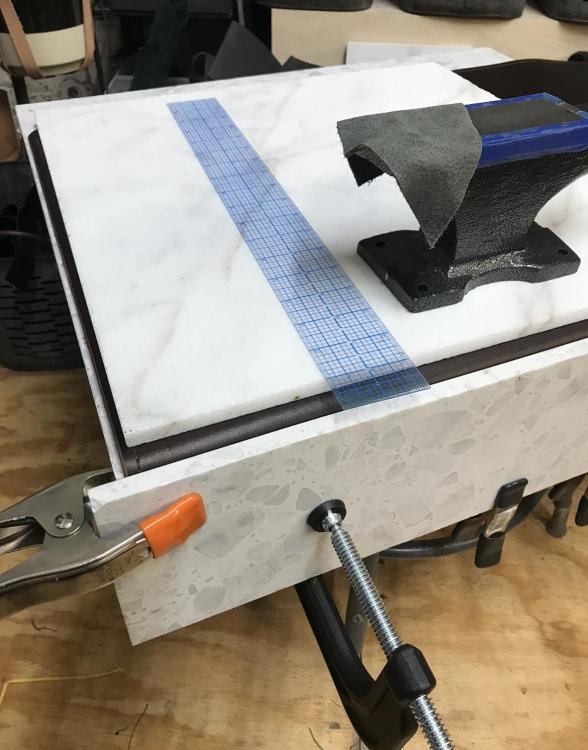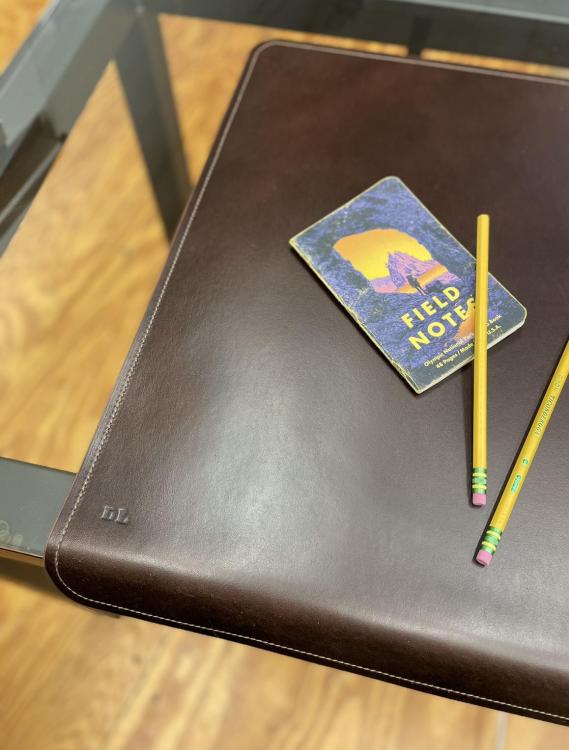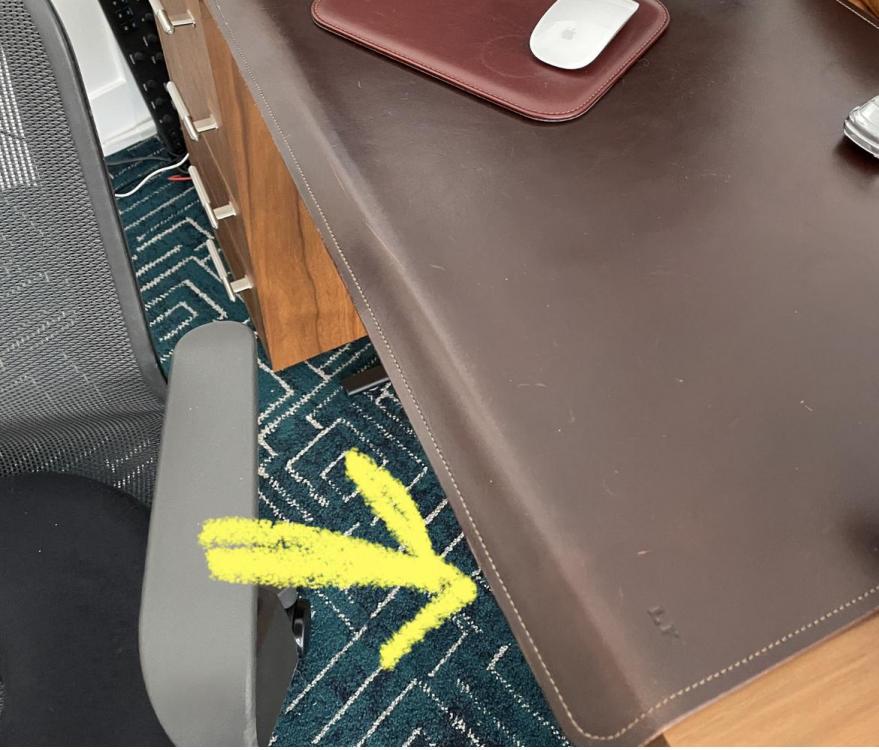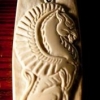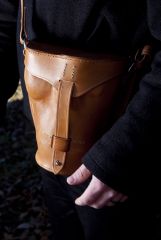Search the Community
Showing results for tags 'molded leather'.
-
I am trying to make a desk blotter that has a small lip on the end, at a right angle, to protect the desk edge. I used about a 7oz veg tan that I wet and bent over a piece of 90degree smooth quartz that I found at a remnant store. Clipped down another piece of smooth quartz on top of it about a week. initially it had a good right angle but over time it’s flattening out. what did I do wrong?
-
From the album: Bags
-
I finally finished the camera bag I started a few weeks back. This one is for personal use, which is a good thing because I learned a lot from making it, and it's certainly not perfect! Over all though, I'm not at all displeased with how it turned out. It fits our camera well (I added 1/2 inch board underneath the camera when I formed the leather), and even fits the bigger lens. I'm looking forward to hauling it along for many hikes. Cheers, Monica
-
Hi all, I've been working on a camera bag, but I've run into a problem. The seam where the three corners meet at the bottom of the bag looks really tacky, and I'm not sure what I should do, or what I should have done to avoid the problem. Any advice would be appreciated! Monica
-
My husband gave me a hand, and we molded the leather straight onto our Canon 5D Mark II with a 50 1:1.4 lens and lens hood. Which, of course, was our first mistake. As it turns out, you don't want it to be snug. The second mistake was molding the leather to the lens behind the lens hood. I'm not sure how we expected to pull it out! Further, we cut it off too short, so I was going to add another piece back on. Then I had to admit what I had been trying to ignore; that ominous sounding crack we heard when molding it was the lens hood coming loose. We molded it with a crooked lens hood, which made for a crooked line and a wonky bag. At some point, you have to cut your losses and start over. At least we learned a lot. On the next one, I'll just make a separate piece for the front and not try to mold the leather to the lens at all. We were trying to mold 9 oz leather. Was that a mistake? Any tips would be appreciated!
-
Hi all, Here is a hunter knife I made nearly twenty years ago with a truck shock absorber leaf for the blade - heated and clamped on a flat surface until it cooled down to remove the curve, Cocobolo wood for the handle, and bronze from the local metal scrap dealer with some bits of stainless steel for the pommel and the guard. It is fully hand made but the use of an angle grinder at the beginning to roughly remove stock before using files. This was the first and only knife I ever made. I made the sheath with leather that I molded the same way I used when working in the disability field in developing countries to make the sockets of the prosthesis (I worked as a technical trainer with NGO's). The leather is sunk in a bucket of water, and once it is totally soaked it is regularly twisted, bent, knead, trampled, tortured , etc. (the inflicted torments to soften the leather is only limited by your imagination - as long as they do not damage it! ), until it becomes elastic, therefore moldable. Usually this procedure is over a period of approximately 18 to 24 hours but it depends on the quality of leather. The leather is then stretched over an exact wooden model of the knife blade and maintained in place with 2 to 3 cm wide rubber bands cut from inner tubes to let it dry. Once nearly dry the rubber bands are removed and the fiber of the leather, which must still be wet at this stage, is tightened back through rubbing it thoroughly with a smooth piece of wood (for instance the handle of a hammer). This rubbing operation removes also the remaining water. Once fully dry the leather that took the shape of the mold is hard and can be covered. If I have time I'll shot a video to be posted on YouTube one of these days. I covered it with snake skin (yellowish and black) that I brought back from the Philippines - I didn't met its first owner, thus I don't know which brand of snake this was, lizard skin (light brown), and even a bit of fish skin (the disk on top of the front part sheath), luckily without the smell. The rest of the sheath is a piece of plastic (rigid while elastic) covered with white lizard, and blue lamb skin for the fringes and other smaller parts. Front and back parts are hand sewn together, but as you can imagine I had to drill holes on a drill press - no chance using an awl for such a thickness unless you are Hulk or Superman . You can see more realizations on my website (www.crafts-design.com) but I'll soon post some of them - with explications about the making-of as a bonus when possible, at least those concerning leather work, on this forum. And I will also post soon an introduction about stitching clamps I make I intend to market - I have first to translate it from French. Fred
- 6 replies
-
- molded leather
- snake
-
(and 4 more)
Tagged with:


